What is Aftersun about?
Aftersun is a movie about memory and reconciling with our past. Sophie is an adult woman with a family of her own, and on her birthday she thinks back to the final days she spent with her father Calum when they traveled to Turkey for a summer holiday. Only 11 years old during the trip, Sophie cannot grasp that her father is suffering from depression. Calum puts on a happy face, but is secretly struggling throughout the trip.
Sophie only realizes these facts upon reflection as an adult. She looks back at video footage taken during their trip in an attempt to understand how much her father was hurting. Based on the ending, we can assume Calum took his own life not long after dropping Sophie off at the airport.
The movie, in effect, represents our struggle to understand the past. Sophie is not just looking back at her father and what led to his untimely death. She is also seeking to understand herself and how the trip shaped the woman and mother she would eventually become.
Cast
- Paul Mescal – Calum
- Frankie Corio – young Sophie
- Celia Rowlson-Hall – adult Sophie
- Sally Messham – Belinda
- Brooklyn Toulson – Michael
- Spike Fearn – Olly
- Harry Perdios – Toby
- Ruby Thompson – Laura
- Ethan James Smith – Scott
- Kayleigh Coleman – Jane
- Charlotte Wells – Writer and director
The ending of Aftersun explained
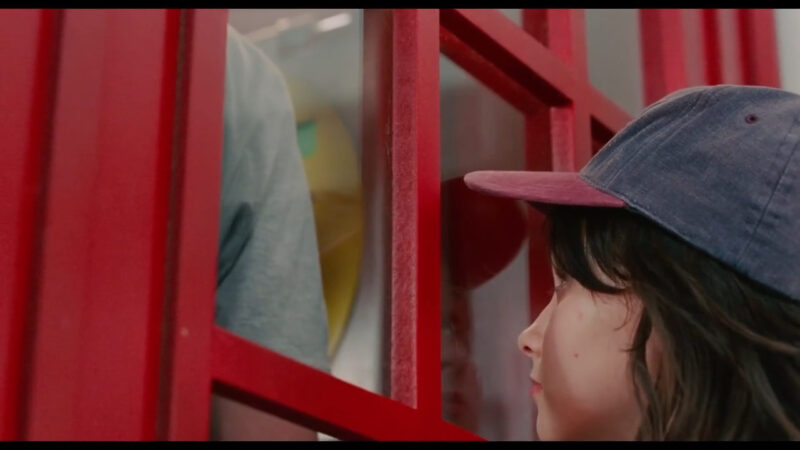
A recap of Aftersun‘s ending
On the final night of their vacation, Sophie and Calum sit at a table. Despite some trying moments throughout the trip, Sophie expresses she had a great vacation. In fact, she wishes it could continue. “Why can’t we stay for longer?” she asks, perhaps earnestly, with the naïveté only a child could conjure. While they talk, a Polaroid photo taken by a passing photographer rests next to Calum’s arm.
When Calum and Sophie return to the hotel, they stop at the bar where people are dancing to the song “Under Pressure” by Queen and David Bowie. Sophie is hesitant to join in, but Calum drags her into the crowd. Then, suddenly, the dance scene is interspersed with an out-of-body shot where an older Sophie desperately searches for her father in a rave scene. We deviate between a younger Sophie hugging her father on the dance floor and an older Sophie clinging to her father for dear life.
The movie then cuts to footage from a MiniDV camera. Calum is taping Sophie as she boards an airplane to go home. Sophie continually disappears behind the walls, only to run back and be playful with her father from afar. It is then revealed that adult Sophie is watching this video footage on her home television.
The movie ends with a shot of Calum holding the video camera. Sophie has left, so he puts away the camera and walks towards the doors to leave. As he exits, a rave scene consumes the room he walks into.
The meaning of Aftersun‘s ending
The interesting thing about Aftersun is that we don’t necessarily have enough details to definitively answer every question. Did Calum take his own life shortly after their vacation? Did something happen to Calum at a rave scene? Which scenes are dreams, which are imagination, and which are reality?
But within that abstraction and unknowingness lies the point of the film: nothing is certain. Aftersun is all about memory and how we piece our past back together. As an 11-year-old girl, Sophie seems unaware of her father’s crippling depression. Calum hides his negative emotions and tries to create a fun and buoyant vacation. When we see Calum crying and mentally unraveling, did that really happen? Or is this the story Sophie has assigned to her father to explain something terrible that happened to him?
Before we really understand the true weight and meaning of the ending, we need to confront the fact that memory is a tricky thing. I think it’s important to discuss Friedrich Nietzsche’s hypothesis about memory. As a famous philosopher, Nietzsche thought that recalling memories with exactness could allow one to identify the definitive moments that serve as the root of one’s traumas. But as we’ve learned over the years as psychoanalysis has developed as a field of study, it’s not that simple. In fact…perhaps you cannot trust your memory at all.
Writer Eleftherios Makedonas explored this phenomenon in their analysis of Luis Buñuel’s film The Exterminating Angel (a famous film that toys with the concept of psychoanalysis). Specifically, he wrote:
Memory is the product of the accumulation of layers upon layers of such old and distorted interpretations of reality. When recalled, later in an individual’s life, they are by definition, something irrelevant to the real facts, which triggered them back in the distant past. As Nietzsche has put it, memory can be conceived of as the set of all our “previous false causal fictions”. To such an extent, that even Freud himself has doubted whether we can assert at all that we really have memories from our childhood and not merely memories just vaguely related to our childhood; at best, these “childhood memories” of ours “… show us our earliest years not as they were but as they appeared at the later periods when the memories were aroused.
As adults, we are frantic to determine the root of our traumas and define the essence of our anxieties. We believe that by fully understanding our past, we can understand the present and why we are the way we are. And this appears to be the case with Sophie, who as an adult revisits footage from her vacation with Calum. While it is never explicitly stated in the film, director Charlotte Wells practically confirmed in interviews the overwhelming theory that Calum, who is in the midst of battling depression during the vacation, takes his own life shortly after the trip. Ostensibly, that trip to Turkey was the last time Sophie saw her father. So as an adult, Sophie believes that by revisiting the trip, she can figure out what led to her father’s demise. While watching the video footage, she revisits other parts of the trip through her memories.
But here’s the thing: memories aren’t…well, real. In a sense they are real, as Calum and Sophie did take a vacation together, and Sophie remembers the kinds of conversations they had and the kinds of things they did. But memories also aren’t real in the sense that we’re just piecing together assumptions of our past. Sophie might remember that she and Calum went scuba diving. But to what extent was Calum upset about losing the scuba mask? How much did that moment capture his anxiety as someone struggling to find work? How deep did Calum’s financial troubles run? And how much did that affect his confidence as a man, as a father? How badly did he want to keep those mental troubles from his own daughter?
The truth is that Sophie will never discover the answers to those questions. By revisiting her memories—which, in truth, are nothing but approximations of what happened during their vacation—she can only hypothesize the answers. The only way to find definitive answers would be to speak with Calum, which Sophie cannot do.
Therein lies the tragic beauty of Aftersun. This is not a film that’s concerned with providing answers; it’s a film about accepting that you’ll never find true answers. It’s a core facet of the human condition, that we’ll never truly figure everything out—not even about the people closest to us. That unknowingness weighs on us collectively, creating a society of traumatized beings itching to feel whole again.
As we revisit each of these final moments from the film—which range between Sophie’s memory of her father and dreams about her father and symbolic representations of her father’s crippling condition—we can observe how this debilitating pressure that affects everybody is visually conveyed.
The Photograph
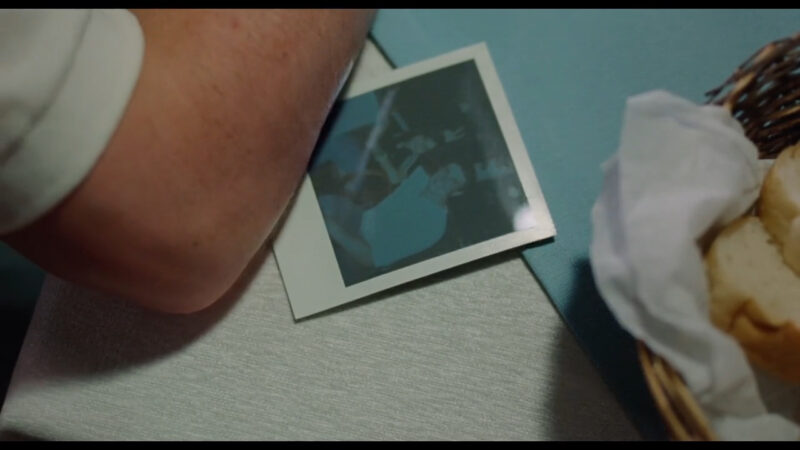
For instance, let’s observe the photograph that sits next to Calum’s arm and slowly comes into focus. This shot highlights the tension between memory and reality: the photograph is seemingly unambiguous, as it precisely captures something that actually happened. Yet, the emotional underpinnings of this photo are indeterminable. Sophie can certainly see Calum in the photo, but she have no idea what he’s thinking or feeling in that moment, how close he is to ending everything.
This shot then becomes a poetic portrayal of an existential crisis that affects us all: we are constantly at odds with ourselves, putting on an image or face that disguises how we actually feel—and everyone around us is doing that as well. The photo slowly comes into focus, yet the overexposed lighting creates a strange sense of distortion that makes it feel surreal. The photograph undeniably captures reality, yet it doesn’t even come close to representing the full reality of the situation.
The Dancing
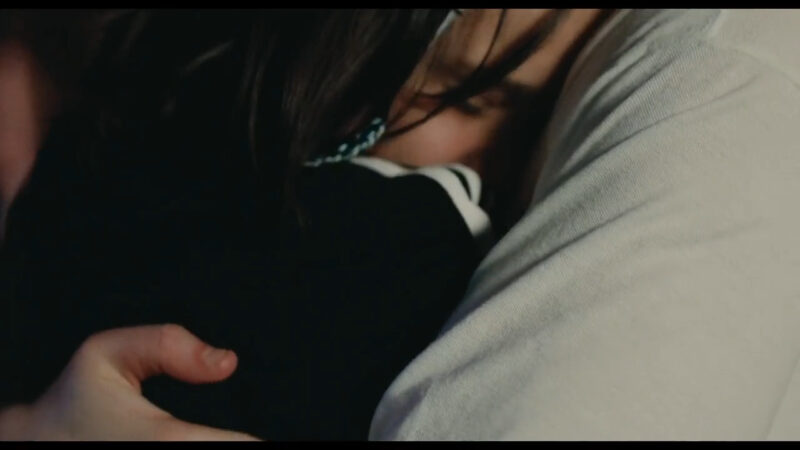
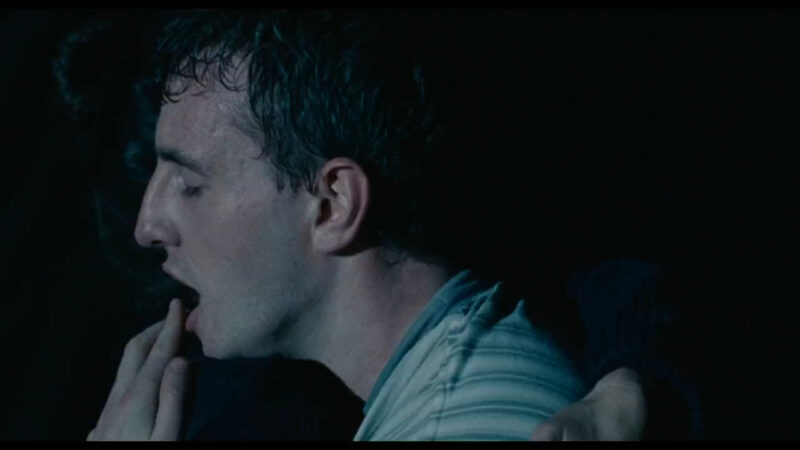
Here, we see memory juxtaposed with a dreamlike representation of Sophie’s relationship with her father—but remember, there really isn’t much difference between the two. While dancing at the resort, Calum clutches onto Sophie, holds her tight, desperate to make the most of his final moments with her. As a child, Sophie is simply in the moment. Yet in her dream, she furiously searches through the crowd to reach her father and hold onto him.
The rave scene, then, becomes a tragic reversal of roles. In reality, Calum grasped Sophie in a moment of mental fatigue, determined to make a genuine connection. Sophie’s recollection of this moment signals that Calum wanted to express all his troubles, to find some catharsis during these final moments of vacation. Whatever energy Sophie has assigned to Calum from her memory is then recreated in the dream—except this time she is the frenzied one. She is reaching out, begging her father to tell her what’s wrong. Yet, just like reality, that conversation doesn’t happen.
A Side Note About “Under Pressure”
It’s important to observe the song that’s playing in the background of these scenes: “Under Pressure” by Queen and David Bowie. The lyrics inherently relate to Calum’s struggle with depression, to Sophie’s sorrow over her father’s passing, as the song is all about the pressure we feel in everyday life. The lyrics in the first verse read: “Pressure pushing down on me/Pressing down on you, no man ask for/Under pressure that burns a building down/Splits a family in two/Puts people on streets.”
But the most notable line that raised many eyebrows comes at the very end of the song. The track closes out with this outro:
Because love’s such an old-fashioned word
And love dares you to care for
The people on the (People on streets) edge of the night
And love (People on streets) dares you to change our way of
Caring about ourselves
This is our last dance
This is our last dance
This is ourselves under pressure
Under pressure
Under pressure
Pressure
Several of these lines feel applicable to Calum and Sophie, such as “love dares you to change our way of caring about ourselves.” But the biggest standout is “this is our last dance,” which led many people to believe that Calum committed suicide after their trip. The song would then signal that this was, indeed, he and Sophie’s last dance.
Interestingly enough, Wells told Indiewire that she didn’t think much about the lyrics of the song when choosing it for this scene, but that “maybe some subconscious part of my brain knew what was happening.” Which seems to imply that Calum did indeed take his own life.
“It’s very satisfying because it was executed just as it was in the script,” Wells continued. “It was always the culmination of the feeling that the whole film builds towards, so I am glad that it hits hard and it is ultimately an expression of grief and all of the complex feelings around grief.”
The Video Camera
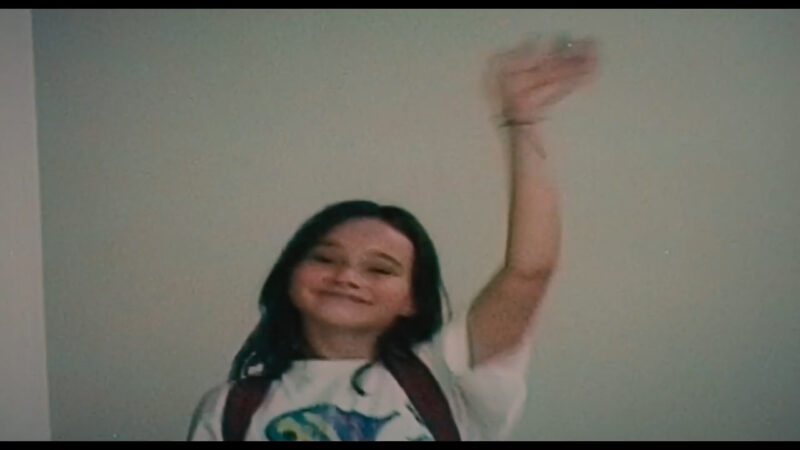
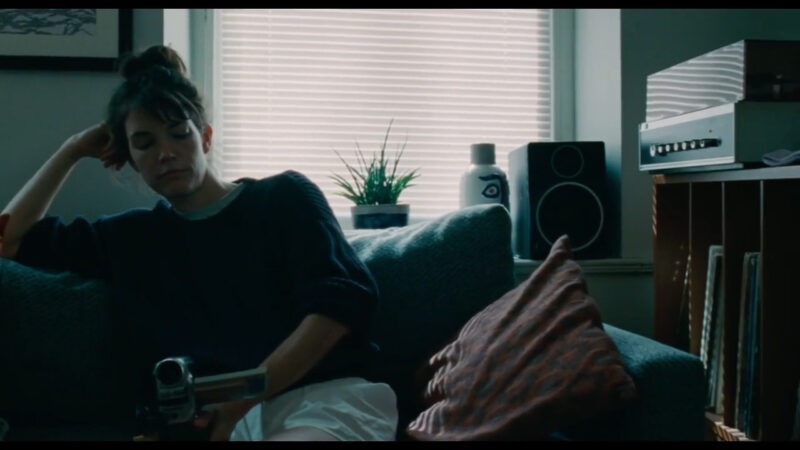
The video camera is the most important motif in Aftersun. As the film plays with memory, the idea of a video camera becomes paramount. Because, ostensibly, a video camera captures reality perfectly. Yet, as we discussed with the photograph, the daunting expanse of human emotion expands far beyond the confines of a screen.
When Sophie watches the airport footage, she isn’t looking at her father, but at herself. There isn’t much to determine about young Sophie, as she’s so clearly vibrant and cheerful and genuinely pleased with her trip. Yet…what about the man behind the camera? Sophie sees herself in the footage. But what does Calum see? What is he thinking? Is he overwhelmed with negativity and stress? Does he think this is the last time he’ll see his daughter?
While the entire film has been through Sophie’s eyes, this shot is purely through Calum’s eyes. And now in adult Sophie’s house, she is seeing the world through her father—yet her distance from her father is gargantuan. She’s so close, yet impossibly far away. This is another visual display of the disconnectedness we feel from others and how impossible it is to truly understand the gravity of someone’s mental hardships.
The Long Hallway
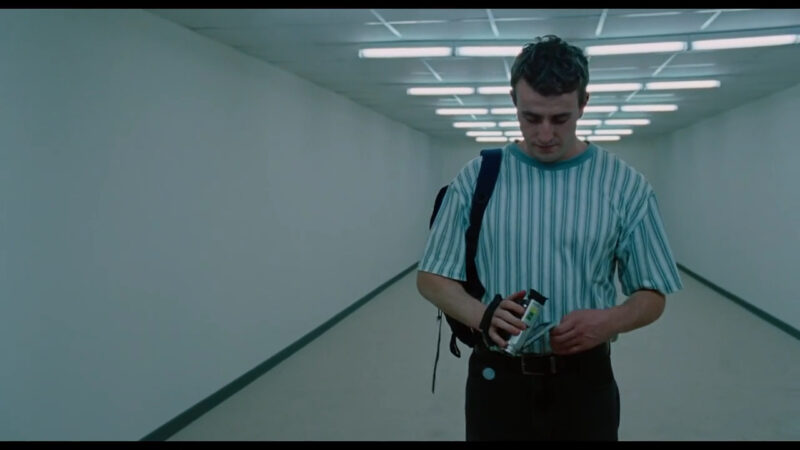
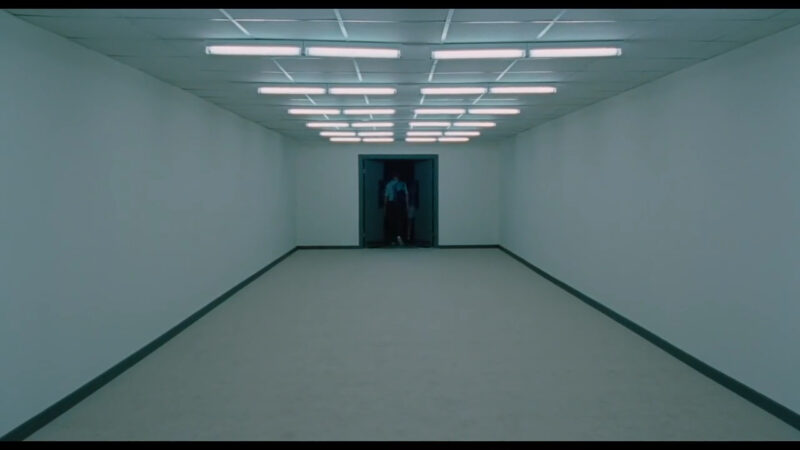
Here is one final moment where Sophie envisions her father’s pain. We are now on the other side of the camera with Calum, who solemnly closes the camera and walks away. We know this scene exists outside of reality, as Calum wanders into a rave scene after walking through the doors of the airport. Essentially, Sophie’s imagination clashes with her dream of Calum at the rave.
Now think about the sequence of events there: we shift from video camera footage that only captures the image of reality, to the reality of Sophie in her living trying to make sense of her father’s passing, to Sophie’s imagination of Calum walking out of the airport, to the dream where she searches for her father at the rave. At each step during the final moments of the movie, Aftersun constantly shifts between reality and distortions of reality. This sequence, in effect, perfectly captures Sophie’s discombobulation as an adult who is desperate to understand something she definitively cannot understand. It perfectly captures what the movie is all about.
The themes and meaning of Aftersun

As we discussed in the ending section, memory plays a huge part in understanding the final moments. Memory is quite relevant throughout the film, as Aftersun focuses on Sophie’s recollection of a vacation she took with her father years earlier. There’s such tension at the heart of that approach because, at the end of the day…our memory isn’t super reliable. When dealing with trauma, we have been led to believe (by famous philosophers, such as Friedrich Nietzsche) that by recalling memories, we can pinpoint the exact root of our trauma.
But as writer Eleftherios Makedonas points out in their analysis of the film The Exterminating Angel, the unreliability of memory makes this journey much more complicated:
Memory is the product of the accumulation of layers upon layers of such old and distorted interpretations of reality. When recalled, later in an individual’s life, they are by definition, something irrelevant to the real facts, which triggered them back in the distant past. As Nietzsche has put it, memory can be conceived of as the set of all our “previous false causal fictions”. To such an extent, that even Freud himself has doubted whether we can assert at all that we really have memories from our childhood and not merely memories just vaguely related to our childhood; at best, these “childhood memories” of ours “… show us our earliest years not as they were but as they appeared at the later periods when the memories were aroused.
This makes revisiting memories a complicated endeavor. In Sophie’s case, she is desperate to understand what happened to her father after their trip, how much he was struggling during the trip. The lyrics of the song (“Under Pressure” by Queen and David Bowie) that plays while Sophie and Calum dance on the last night of their vacation (with the line “this is our last dance”) seems to imply that Calum takes his own life soon afterwards (Wells herself practically confirmed this). Upon reflection, Sophie reads signs of his depression during the trip, such as all his self-help books and the financial troubles that made him feel inadequate. In this sense, memory is Sophie’s only way of coping with the loss and finding resolution.
Yet…how much can Sophie trust her own memories? She could be reading into things too much—or perhaps not reading into them enough. Even photographs and video footage from the trip couldn’t possibly convey what Calum was dealing with mentally. Sophie is left with nothing but a montage of images and sounds to which she’s desperately trying to assign meaning.
There’s a tragic beauty in this theme. Memory is powerful in the sense that it allows us to revisit the past, to relive moments we shared with loved ones. But at the same time, memories aren’t real. They are simply representations of what we perceive as reality. This creates an emotional cognitive dissonance in us all as we attempt to deal with trauma and feel whole again spiritually.
Dealing with depression
Anyone who’s dealt with depression, either themselves or through a loved one, can understand Calum’s detached behavior in Aftersun. I myself witnessed someone very close to me experience a crippling depression that left them comatose emotionally. The person I once knew would sometimes completely disappear and become a lifeless zombie, an overwhelming static presence in the room. You knew something was wrong, but you also knew there was nothing you could say or do to cure the person.
In this sense, the battle with depression exists on two levels in Aftersun. Calum himself is ridden with depression, which causes a great amount of tension as he attempts to make the vacation as enjoyable as possible for Sophie. Sometimes Calum is genuinely happy to be with Sophie, but other times it feels like he’s forcing a smile to make Sophie feel safe. Calum may desperately want to talk about his depression, but he also feels he can’t afford to in this situation—or, perhaps, any situation. He may wander through life like this, constantly disguising himself as a normal person who’s happy with his existence. And as he continually buries that negativity, it consumes him—until it reaches a breaking point.
We see Calum flirting with death in a moment where he stands on the rail of his balcony. It serves as a reminder of the dark crevices of his mind that would eventually push him over the edge.
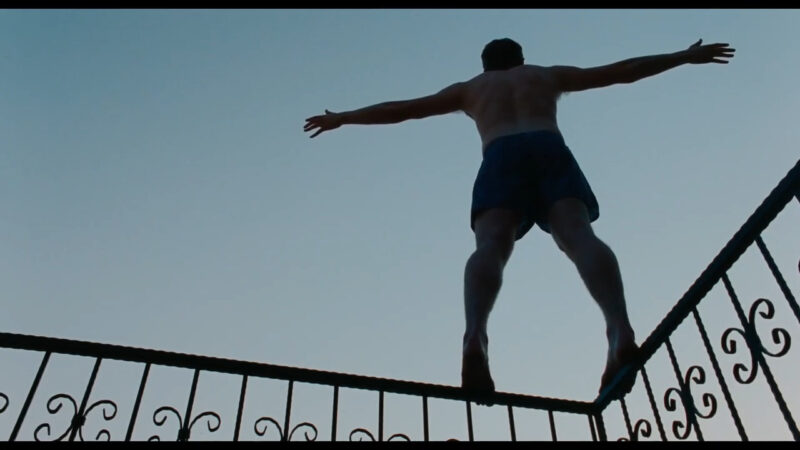
On the other side of the coin, Sophie is dealing with her father’s depression—even if she doesn’t realize it. When Calum doesn’t join Sophie on stage to sing “Losing My Religion,” she feels betrayed because he left her up there all alone. He is her father! It’s his job to do things like this… But upon reflection, Sophie understands that her father was struggling immensely, that he couldn’t handle being put on display in front of everybody during a moment of weakness. This becomes especially clear when she reflects upon convincing a group of vacationers to sing “Happy Birthday” to Calum, who listlessly stands by as he becomes the center of attention. It’s no surprise, then, that the film fades into a shot of Calum crying immediately after.
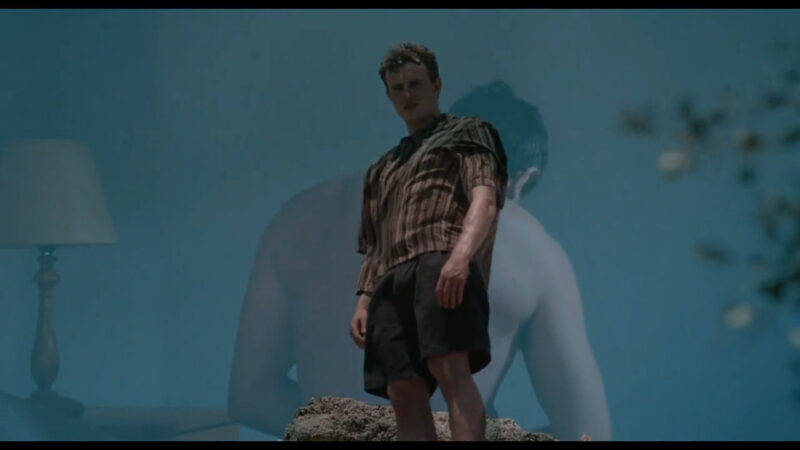
There’s such tension between Sophie’s perception of Calum’s depression and Calum’s actual real-time struggle with depression: Sophie will never be able to fully comprehend the weight of Calum’s struggles, and Calum was never able to fully communicate just how much he was struggling. This leaves a debilitating gap between the two that can never be filled. This reveals the devastating gravity of depression that looms over so many people’s lives.
Why is the movie called Aftersun?
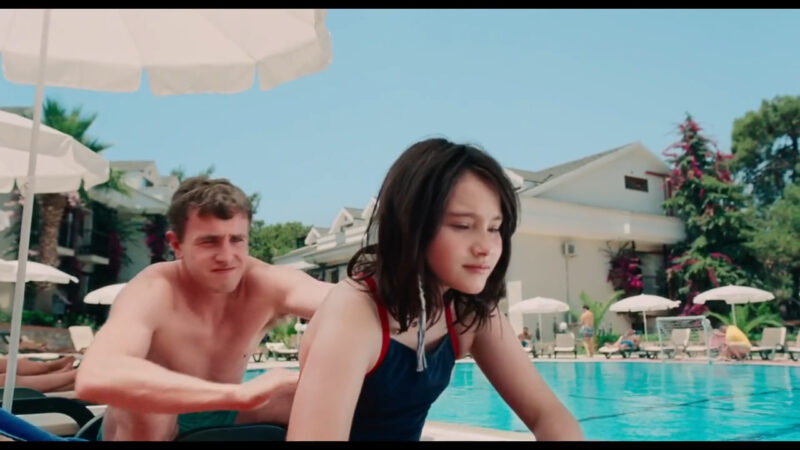
The title of the film derives from the actual product of aftersun lotion, which is applied to one’s body after exposure to the sun. You either use aftersun lotion in an attempt to prevent sunburns or to soothe the skin after you’ve already been burned. Calum and Sophie apply lotion to one another in several scenes, as they spend each day of their vacation in the sun.
Obviously, the meaning of the title Aftersun extends beyond the literal. It becomes symbolic of Sophie’s memory, as the entire film is her recollection of the final moments she spent with her father. The English prefix “post-” means “after,” signaling that the entire film is about Sophie on the other side of something traumatic. She is now a grown adult—the same age as her father when he died, in fact—which causes her to reflect on her final moments with her father. So the title of the film inherently refers to this reflection.
But there’s more to explore with the word “after.” The Old English “æftan” means “from behind, behind, farthest back.” It’s a superlative of the Old English words “æf, af, of,” aka “away, away from, off.” This distance perfectly captures an older Sophie’s state, as each succeeding day places her farther and farther away from Calum. Despite her attempts to revisit her past through memory, she will never be able to fully comprehend what her father struggled with during that vacation, what led to his untimely death.
Now we can blend the literal with the symbolic. Aftersun lotion can only be applied after exposure to the sun. And at that point, you may already be burned, so there’s nothing to do about it. Symbolically, this lines up with older Sophie’s attempt to heal emotional wounds. In a sense, she has already been “burned” by her father’s death, which left a stinging sensation on Sophie that hasn’t healed in years. Revisiting her memories, aka trying to assign meaning to her father’s suicide, is her way of applying lotion. But she’s already been exposed to the sun—the burn has already taken hold. The lotion can only treat physical wounds. But the emotional wounds run much deeper.
We should also consider Sophie’s conversation with Calum about the Sun:
Sophie: I think it’s nice that we share the same sky.
Calum: What you mean?
Sophie: Well, like… Sometimes at playtime, I look up at the sky and if I can see the Sun then… I think that the fact that we can both see the Sun, so even though we’re not actually in the same place and we’re not actually together… we kind of are in a way, you know? Like we’re both underneath the same sky, so… kind of together.
The title becomes even more striking with this context. Even when Sophie and Calum are separated, they are connected under the same sun. But…what if Calum is gone? The title then takes on a new meaning: aftersun = afterlife. The Sun may no longer serve as a physical connection. But you are now connected by something greater. You don’t connect with the physical body, but the spirit.
Important motifs in Aftersun
Cameras

Aftersun opens with recorded video footage from Calum and Sophie’s vacation. It starts with Calum on the balcony of their hotel room, then shifts into Sophie’s dream about the rave, then to the footage of Sophie boarding the airplane at the end of vacation. This opening sequence establishes Sophie is looking back at the vacation footage on her 31st birthday—the age when Calum took his own life. Thus, cameras becomes a means of revisiting memories.

It’s fitting, then, that the movie ends with Calum putting away the video camera. This is an interesting visual twist. The camera footage we see throughout Aftersun serves as live documentation of the vacation; a means for Sophie to revisit the past. By revisiting those memories, Sophie is hopeful to find catharsis and understand her father.
But this final shot puts something else into perspective: Sophie can’t fully see her father through that footage, through those memories. I believe that’s the point of the following two shots in the film. The first is Calum on a television screen as Sophie records him, and the second is Calum’s reflection on the screen after he asks her to turn the camera off.
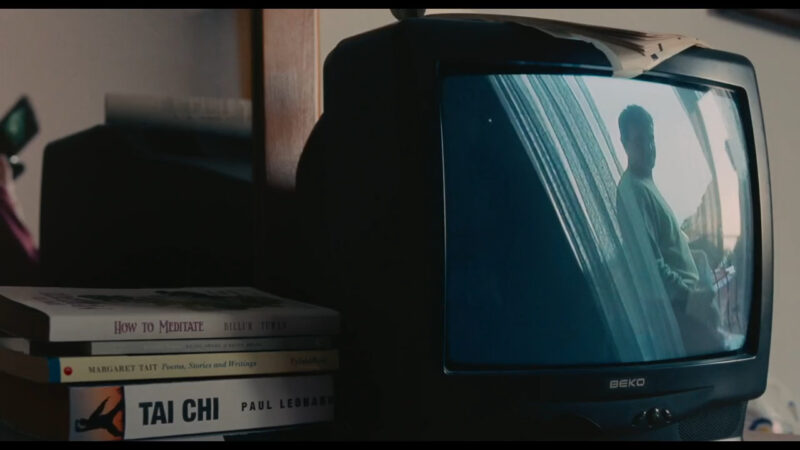
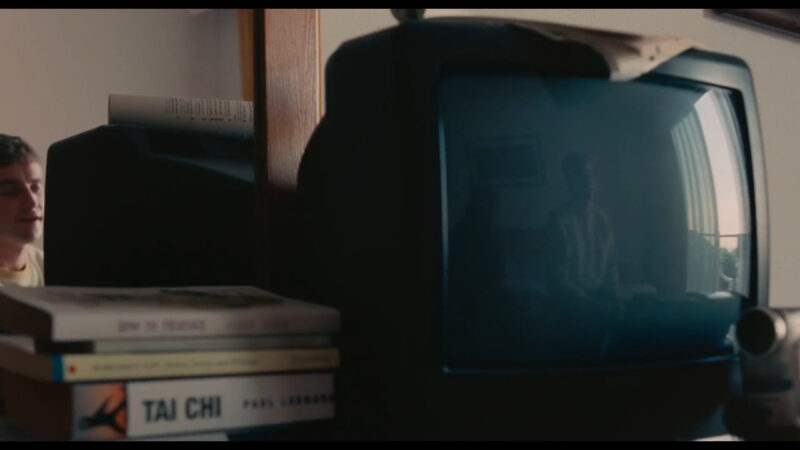
I love these shots. They perfectly captures the disorienting reality of memory. There is ample footage of Calum on this vacation for Sophie to look back on. But there are also moments that solely exist in Sophie’s memory. In a moment where Calum became vulnerable and recalled painful memories from his childhood, the television screen becomes a way of preserving the discussion in Sophie’s own memory. Memories are powerful entities that both make us feel closer and further away from the past. So anytime you see cameras in Aftersun, the motif is packed with bittersweet truths about existence.
Hang gliders
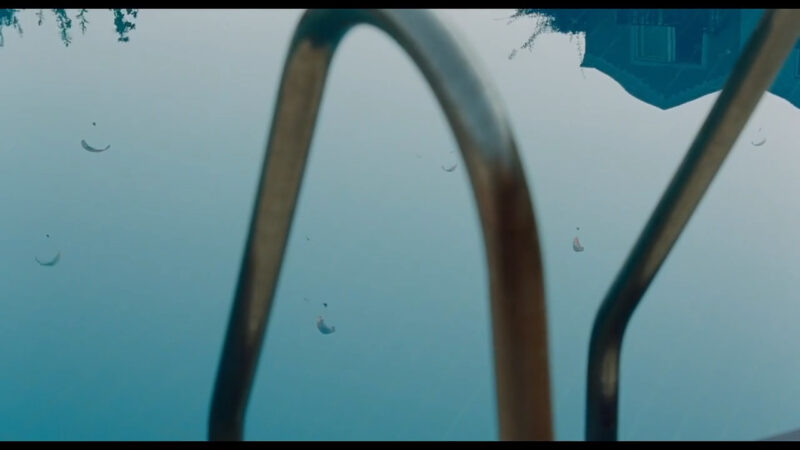
Hang gliders are an interesting motif in Aftersun because the image evolves as the movie progresses. When Sophie first inquires about going hang gliding, Calum says, “You’re too young, poppet.” In that moment, there’s a long, calming shot of a lone hang glider in the sky as Sophie watches on. As the movie progresses, the hang gliders multiply and swirl around each other in the sky. And eventually, as seen above, they are reflected in the pool water.
You wouldn’t think much of the hang gliders if Wells didn’t feature them so prominently in the film. In my opinion, the image captures Sophie’s relationship with her father as a child, and Sophie’s desire to understand her father as an adult. When Sophie was a child, Calum regarded hang gliding as dangerous. This lines up with other behaviors we see from Calum, who constantly frets about applying sunblock and teaching Sophie self-defense. He is very concerned for her safety, likely a reflection of his own existential crisis. But when Sophie reflects on the vacation as an adult, she likely envisions the hang gliders to symbolize the distance she now feels from a man who hid his depression from her.
I personally love the shot of the hang gliders reflected in the pool. I might be reading too much into it, but I think this image captures the aura of memory and reflection. In this moment, we aren’t watching the hang gliders from Sophie’s perspective, but instead from a tangential perspective. It’s almost an instance of world building for Sophie’s memories, building out this ethereal realm where her final moments with her father exist. Much like these hang gliders, we aren’t necessarily watching Calum and Sophie on vacation, but a memory of them on vacation.
There’s only last image I’d like to note—and again, mind you, this could be me reading into things way too much. But while Sophie and Calum are showering and rinsing the mud off their bodies, there’s a shot of the dirty water as the mud runs off them.
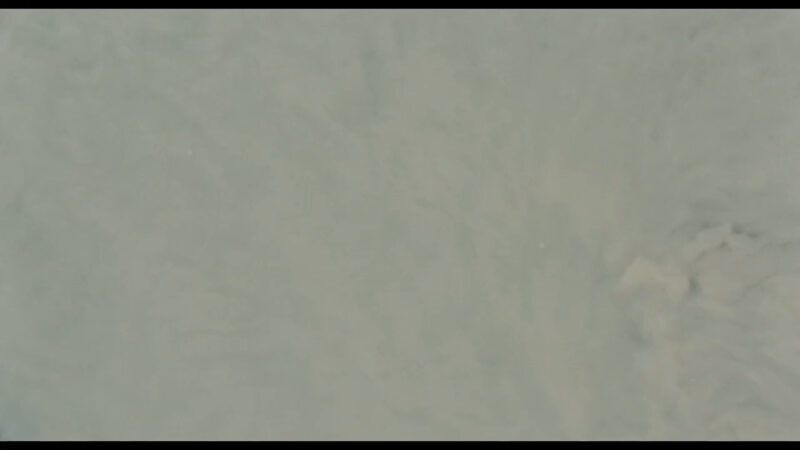
To me, the way the water and mud swirls and flows off their bodies recalls the shots of the hang gliders. While the hang gliders represent distance, the mud is uncomfortably close. While the hang gliders are perfectly visible and concrete, the mud is cloudy and abstract. Paired side by side, I feel these complementary images capture the murkiness of Sophie’s memory, her anxiety to understand why her father was so depressed.
Rugs
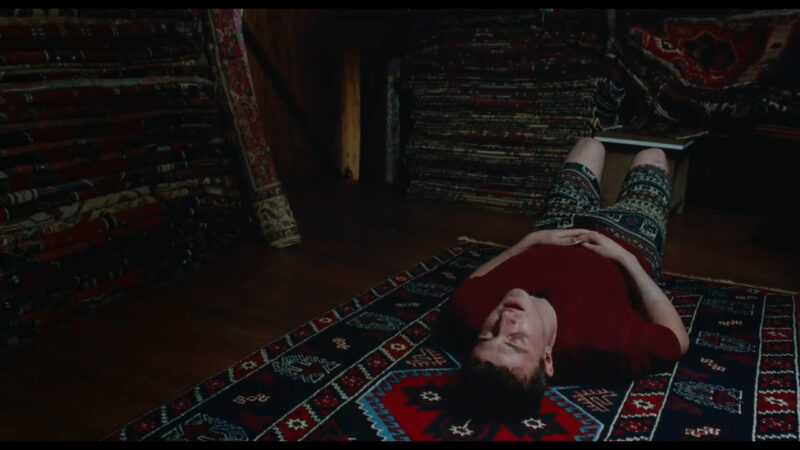
At one point in the movie, Calum asks about purchasing a rug. As he tells Sophie, each rug has different symbols that tell different stories, and one specific rug speaks to him. But it turns out the rug is much too expensive. Later, however, when Sophie is hanging out with the older kids, Calum returns to buy the rug. And he shares a sober moment with the rug as he lies on the ground.
Many people might not catch this, but the rug returns later in the movie in Sophie’s apartment. She wakes up from a dream and we see it beside her bed.

Sophie has just finished dreaming about her father at a rave. We never learn if there was an actual rave where something happened to Calum. But regardless, the rave comes to represent the distance she felt from her father. She searches desperately for Calum, trying her best to save him from whatever terrible fate awaits him. After waking up from that dream, she places her feet on the ground. Then her partner rises from the bed and wishes her a happy birthday.
All in all, the rug comes to represent solace for Calum, despondency for Sophie. Calum had money troubles, but felt such a strong connection to a certain rug despite not understanding the symbols on the rug. He shared an inherent connection with the rug that brought him peace on a trip where he was severely depressed. Sophie keeps the rug as a solemn reminder of her father, who took his own life at her present age as an adult, 31. The rug is part of her ongoing narrative to understand her father’s emotional turmoil at that age.
Questions & answers about Aftersun
What is the significance of the rave/nightclub scene?

In truth, we don’t know for certain if there was a real-life instance involving Calum a rave scene. The movie doesn’t provide that information. But, in my opinion, it’s more likely that the rave simply serves as a visual metaphor for Sophie’s relationship with her father. The rave scene takes place during Sophie’s dream, as we see her wake up in bed following one of the scenes. This leads me to believe it’s a repeated dream that haunts her as she tries to understand her father’s depression and why he took his own life.
Be sure to read our much more detailed discussion of the rave scene and Aftersun‘s ending.
Now it’s your turn
Have more unanswered questions about Aftersun? Are there themes or motifs we missed? Is there more to explain about the ending? Please post your questions and thoughts in the comments section! We’ll do our best to address every one of them. If we like what you have to say, you could become part of our movie guide!

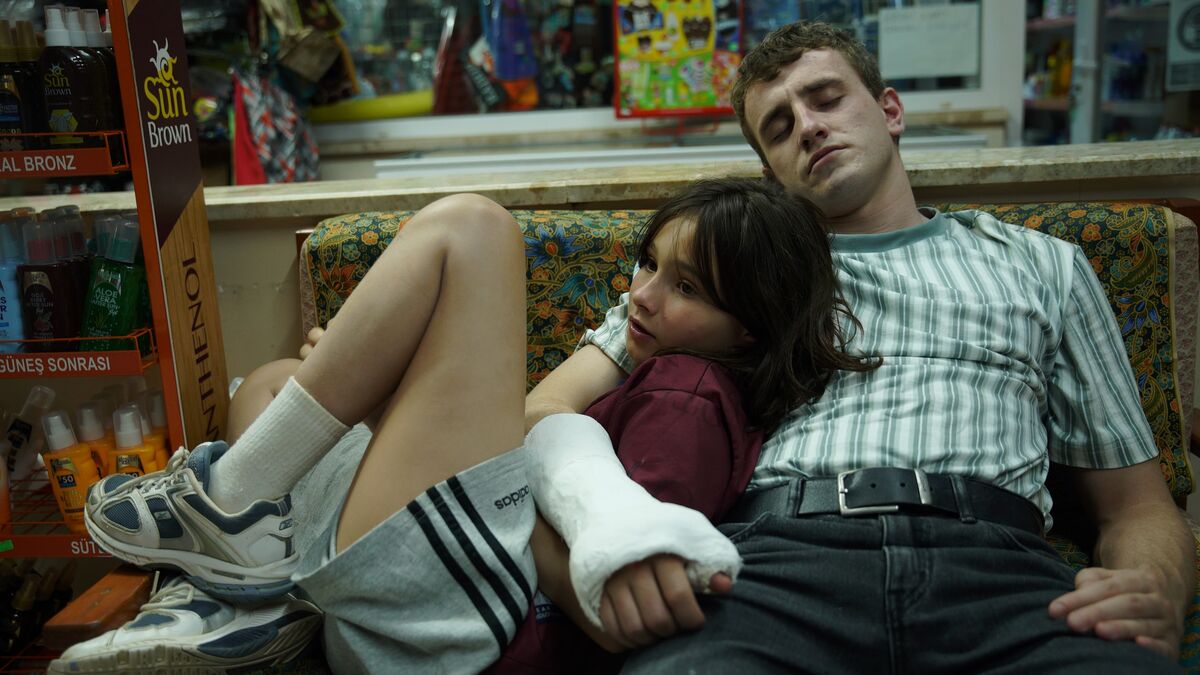
Thank you so much for this thoughtful and in depth analysis. Just watched the film and your article helped me appreciate and understand it even more, thank you!
I could relate to this file very much. I was painful to watch. I practically was Calum. As a divorced father, I suffered through the same type of depression, much of which came from being separated from my daughter and ex-wife. When Calum asked Sophie to give his love to his mother, that was very telling for me. I did the same thing. I was wracked with guilt, wishing I had somehow been a better husband, and being away from my daughter was my fault. Around my daughter, I would put on the happy brave face, but underneath I wanted to die. I thought about it many times, but thankfully could never bring myself to do it. I have specific good memories of spending time with my daughter that I knew would haunt me for the rest of my life. Almost like snapshots in my mind. Good memories, similar to the vacation in the movie, but always with a sense of underlying dread it was all slowly slipping away with each passing day. I wanted so desperately to connect with my daughter, but I didn’t have the emotional tools. I still struggle with it, but now 30 years later I have learned to cope, mostly with denial. Not the healthiest approach, but it gets me through the day. Great film! I’m not sure I could watch it a second time. That really hit close to home.
Thank You Mike for sharing & I guarantee … your daughter thanks you too. Hugs.
Thank you Dea. I have never posted anything on any board online, but this film and article really resonated with me. It’s nice to know someone heard me. Take care. Mike
This is a movie where u get a little more each time you watch it. It will definitely keep your wheels spinning for a while! Wonder is an incredibly complex feeling but it brings out the deepest parts of our spirit.
Honestly, I wish there were scenes showing Adult Sophie coming to terms with her father’s decision and trying not to fall into the same pattern with her wife and baby ( which we could have seen more too 🙂 )
Yeah. It seems like most of Adult Sophie’s story is just maybe having more of an understanding of who her dad was. Rather than how it relates to her life or means for her life.